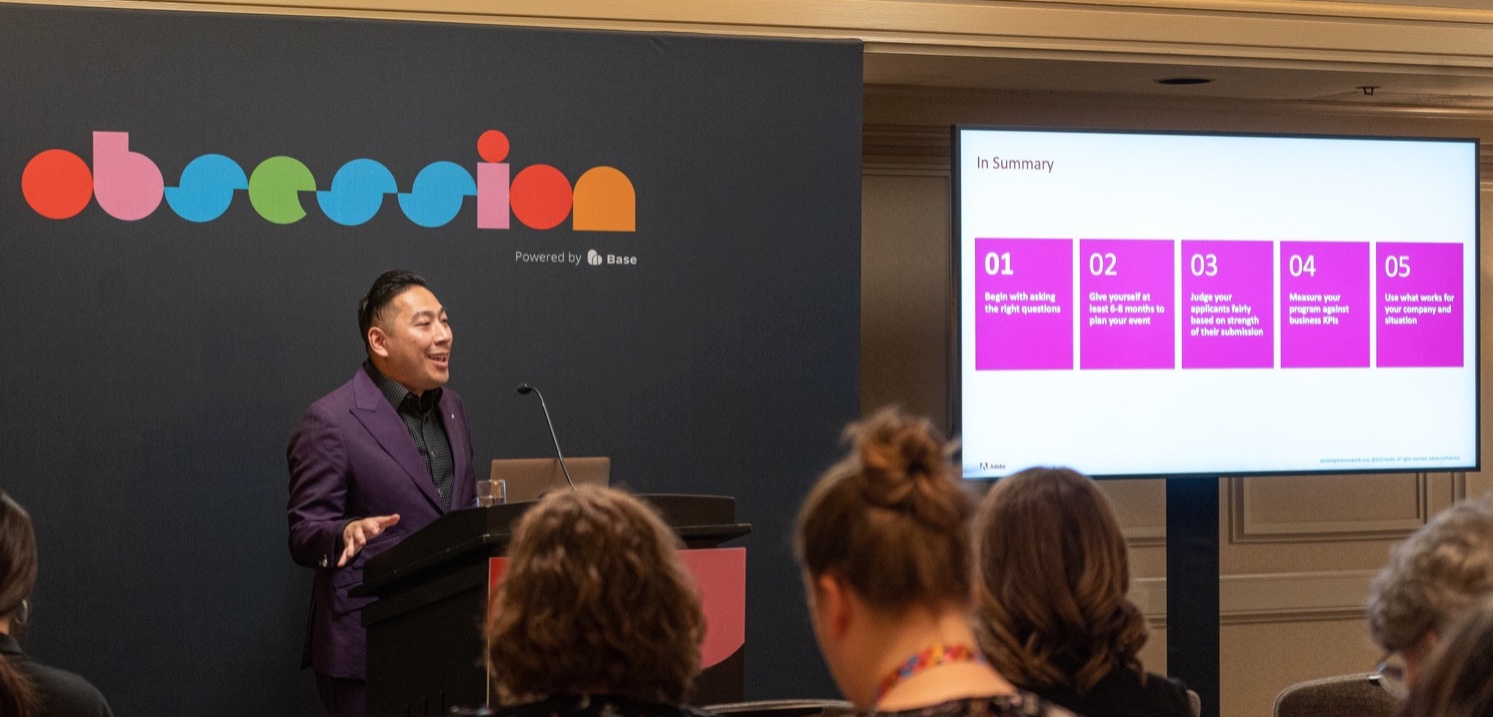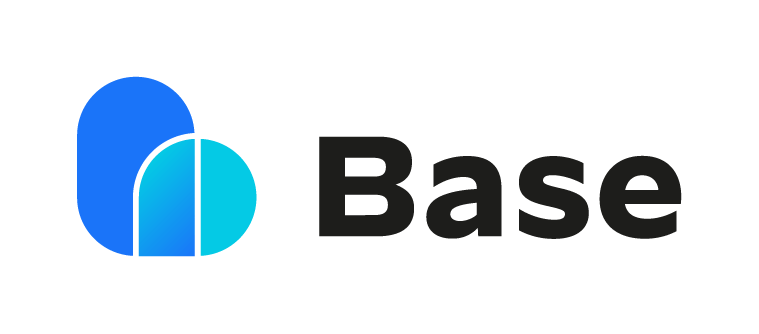Home » The Customer Led Growth Blog » The 5-Step Playbook for Creating Customer Awards Programs That Rival The Oscars
The 5-Step Playbook for Creating Customer Awards Programs That Rival The Oscars

The 5-Step Playbook for Creating Customer Awards Programs That Rival The Oscars
A 2022 TOP25 Influencer in Customer Marketing and Advocacy, Kevin Lau (former Adobe and now at F5), spoke at our recent industry event the Obsession Summit in San Francisco. Here’s what we learned from him during his session titled: The 5-Step Playbook for Creating Customer Awards Programs that Rival the Oscars.
With customer awards season (always) looming, it’s important to know that proactive planning can reduce the headache aspect of this type of project drastically. And you get the added value of a program that is both enjoyable and rewarding for all involved. In 2021, Kevin was responsible for the creation of Adobe’s renowned Adobe Experience Makers: “Behold the Bold” Awards ceremony, that showcases customers delivering on Adobe’s vision to change the world through digital experiences using Adobe Experience Cloud solutions. His story begins with him sharing his own experience of being compelled by the Covid-19 pandemic to “pivot” from a unified in-person user conference and awards ceremony to two entirely virtual events in under 45 days. In light of his experiences, Kevin has devised a 5-step playbook that can help us all stay grounded as we devise our own plans.
Kevin had to use his organizational superpowers to make one of the marketing industry’s biggest events a raving success, despite the almost impossible circumstances that the world had presented him with. He shares these with us in this playbook presentation and ensures us that if you stick to the approach and guidelines, you can make your ceremony just as good, regardless of scale, timing, or audience.
The five phases in Kevin’s awards program playbook are:
- Planning
- Promotion
- Judging
- Execution
- Post Event
Phase 1: Planning
Consider who needs to be engaged in the awards event, customer service, sales, marketing, legal, brand?
Having a centralized program manager who handles the whole experience is important. It’s best to partner with someone with very strong events experience and someone else who can handle communications in a compelling manner.
The first step in planning is to consider the goals/ objectives of an awards program and try to come up with a good theme.
In Adobe’s “Behold the Bold” awards event for 2022, the objectives were:
- Celebrate, recognize, and amplify customers delivering a game-changing digital transformation using Adobe Experience Cloud applications
- Spark inspiration and demonstrate business value to customers and prospects
- Create customer advocates from the “best of the best”
- Fuel the customer success story “engine” that influences adoption, retention, cross-sell, upsell
Kevin says it takes six to eight months to pull together a successful awards event. He suggests pushing back if your CEO asks that it be done in three months, as you risk only getting a few people put forward!
Allocating Budget
These are the areas that you are going to allocate the most budget for:
- Creative content
- Sales SPIFF – incentives to encourage sales to drive submissions
- Awards microsite + application elevates the experience and provides a place to apply
- Finalists’ gift packs and trophies – enhance the winners and finalists experience
- MC/Hosts – an industry thought leader or someone internal
- Post Event Winner Series – continued use of winners for video and webinars to demonstrate use cases
- Celebrity entertainment and/or external hosts – this is the biggest part of the budget
- Event production or in-person venue (video/recording/food and beverage)
Determining Awards Categories
Get in front of your actual users. Don’t rely on email lists from CRM or mailing tools! Create a two-way communication mechanism with your product users. This can be done online and in offline activities such as events, in training sessions, during user group discussions, and through colleagues.
It is critical to think about company, individual, and team recognition.
Use fair selection criteria for the awards. It’s vital that it isn’t for customers coming up for renewal. Using finalists, rather than just a winner, means you can bring all of them into customer panels and webinars. Also, finalists can be motivated to improve their story to win the following year.
Consider announcing the finalists and winners using a virtual gala, public event, or another channel.
Finally, work out how the program aligns with the overall KPIs for the business.
The Application Process
Kevin’s objectives for this were to:
- Increase submissions by 30%
- Integrate Adobe Workfront Lion Awards
- Expand the SPIFF program
- As well as allowing the entry of applications the microsite should clarify that only companies who can receive awards should submit their applications.
The Adobe awards program was open for about 45 days, although Kevin recommends being flexible on the end date as there tends to be a flurry of applications towards the deadline.
Phase 2: Promotion
Sales can be incentivized to encourage customers (leaders and practitioners) from all segments and regions to apply. This is a good way to recognize teams for their contribution to the program’s success.
A microsite enables the customer to enter the application easily. Kevin recommends that the customer completes the submission. The account rep can do this, but it can pose challenges in terms of accuracy and PoV.
Don’t worry if you have a quiet procrastination period during which there are little to no submissions. They typically come in at the beginning and towards the deadline as people are moved to act.
Ultimately promotion depends on the budget, although some advertising will help with exposure if you can make this happen.
Phase 3: Judging
This is probably the phase that requires a lot of collaboration. Mainly because you build Judging teams of 4-5 individuals that are drawn from internal stakeholders. They should be people linked closely to how customers are using the products. There should also be an executive to give oversight.
Design a judging team that is composed of cross-functional customer-facing internal stakeholders like PMMs, PMs, product experts, maybe even consultants. And then they read through the application base and use a score card you provide. The judging scorecard contains the judging criteria, and judges need training to understand how to judge.
A category like the Maverick award that is an audience choice is a good way to give your community a voice in recognizing accomplishments that may not go under a specific category or may go unseen in your ecosystem. We keep this one to be announced only at the live event and that makes for a nice addition to the event.
Phase 4: Execution
When the finalists and winners have been agreed, an email should be sent to finalists so that they can give shipping addresses and contact details. Adobe sends a gift box with fun things, including a medal the finalists can wear at the presentation.
Adobe has two live events for two different regions. These have been run by a production company called Van Wagner using Zoom and LinkedIn Live. Both are streamed live on social media and on zoom to get more attention and buzz.
Adobe asked Katie Martell, an Adobe Insider and industry thought leader, to be the 2022 MC. She made short videos before the event to generate further interest and buzz coming up to the live event.
The 2022 event concluded with music provided by non-other than Adam Lambert!
From the live production angle, try to make sure there is good energy in the room. Adobe had the design and film crew make it interesting and avoid getting dry if you have many categories and nominees.
Phase 5: Post Event
Of course, measuring the ROI will be your biggest goal. Adobe employs the following measurements:
Year-on-year submission growth, broken down by industry, region, and whether sales are driven by partners, internal sales, or direct from customers
Annual Recurring Revenues influence, covering customer retention, cross-sales, up-sells
All this data is piped into what Adobe calls its Advocate Dashboard.
Try to interview each of the winners and use the high-level recap of their submission to create content that helps fuel your campaigns and drive interest for the next awards program. Be sure to always elevate the success of your finalists and winners, alongside the role your partnership has played in empowering them to succeed with your technology.
Summing up the session, Kevin highlights some guidelines for success:
- Be sure to ask the right questions of your internal teams and make sure they are aligned and know what is involved in making this program a success.
- Give yourself enough time for planning and production, at least 6-8 months.
- Ensure that the judging process is clear to the teams and not influenced by outside factors or anything other than the objective criteria. Fair and equal
- Measure your success based on KPIs that your business has.
- Use the resources and budget that make sense for your company (not everyone has a budget like Adobe).
Watch Kevin’s session here and hear his story.
On edge about the next Obsession Summit? Sign up for an early invite here.

